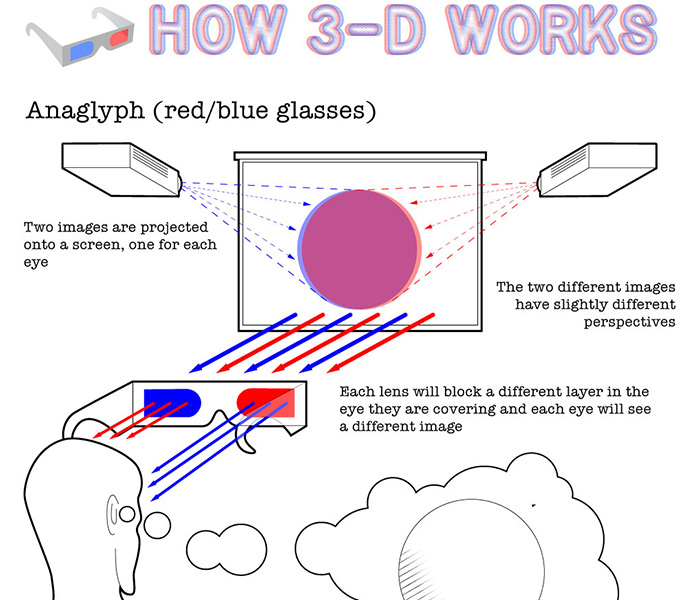
Red-blue 3D glasses, also known as anaglyph 3D glasses, are a type of eyewear that creates the illusion of depth and dimension in 3D images and videos. These glasses utilize red and blue filters to separate the visual information for each eye. In this article, we will explore the working principle behind red-blue 3D glasses and how they enable us to perceive 3D content.
Working Principle:
Red-blue 3D glasses work based on the principle of color filtering and the way our eyes perceive depth. The process can be summarized as follows:
Color Separation:
The 3D content displayed on a screen or in print is composed of two offset images—one in red and the other in blue. These images represent the perspectives of the left and right eyes, creating the illusion of depth.
Filtering Light:
Red-blue 3D glasses consist of a red filter for one eye and a blue filter for the other eye. The red filter blocks the blue color spectrum, allowing only red light to pass through, while the blue filter blocks the red color spectrum, allowing only blue light to pass through. This separation ensures that each eye receives a slightly different image.
Depth Perception:
When we wear red-blue 3D glasses and look at the corresponding 3D image or video, each eye perceives a distinct version of the scene. Our brain combines these separate inputs and interprets the differences, creating a sense of depth and three-dimensionality. The brain uses the offset images and the color cues to reconstruct the visual scene, providing an immersive 3D experience.
Applications:
Red-blue 3D glasses have found applications in various domains, including:
Movies and Home Entertainment:
Red-blue 3D glasses have been commonly used to view 3D movies and videos. They provide an accessible and affordable way to enjoy 3D content in theaters or at home.
Educational and Training Material:
These glasses are used in educational settings to present 3D images or videos that enhance learning experiences. They allow students to engage with visually stimulating content in subjects like science, history, and geography.
Online Content and Gaming:
Red-blue 3D glasses can be utilized to view 3D content online or play compatible video games. By wearing the glasses, users can immerse themselves in interactive virtual environments or enjoy enhanced visual effects.
Conclusion:
Red-blue 3D glasses work by employing color filtering to separate images and create the illusion of depth perception. By presenting offset red and blue images to each eye, these glasses enable our brain to merge the visual inputs and perceive three-dimensionality. From movies and educational material to online content and gaming, red-blue 3D glasses offer an accessible and enjoyable way to experience the immersive world of 3D visuals.

